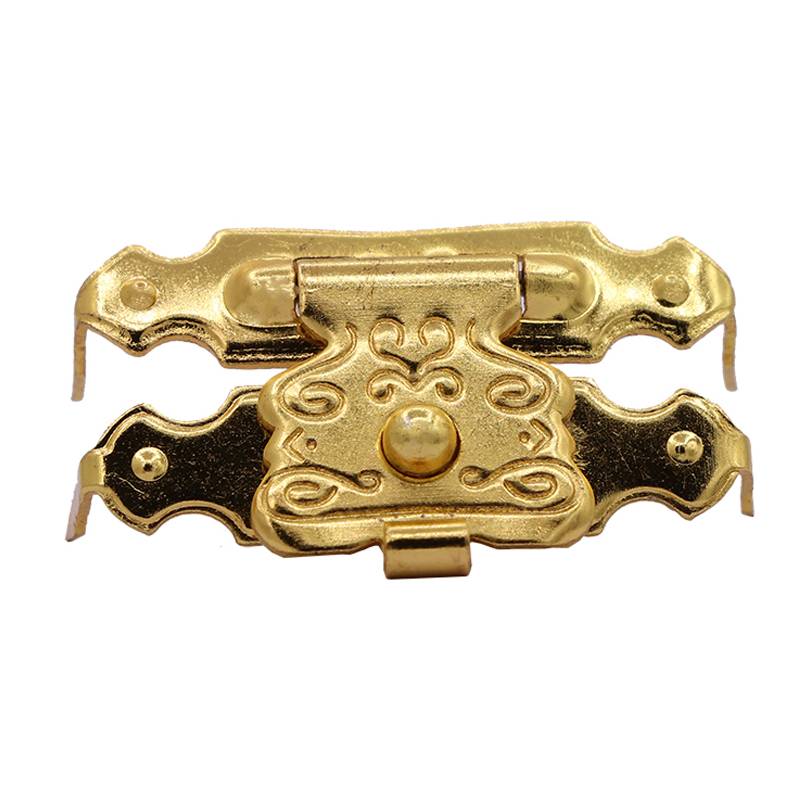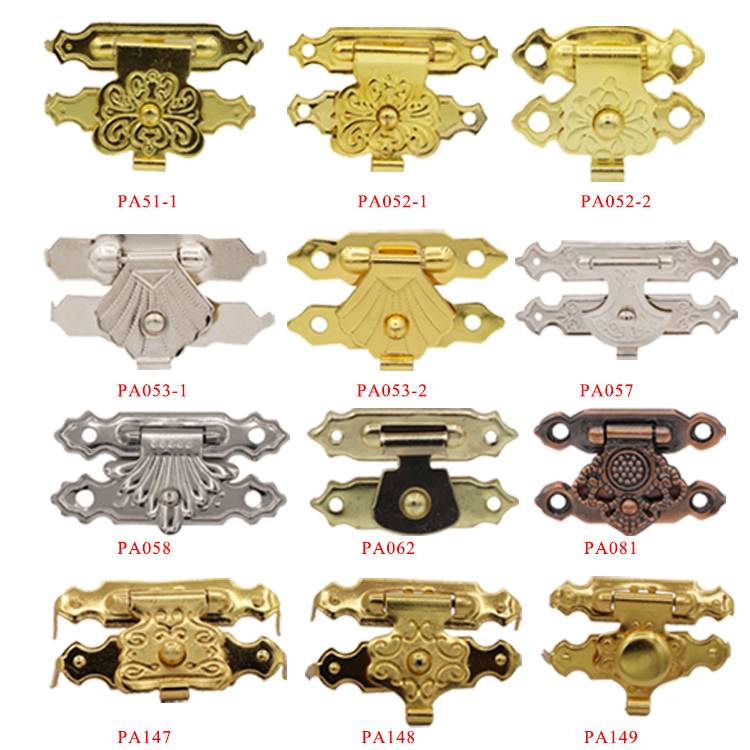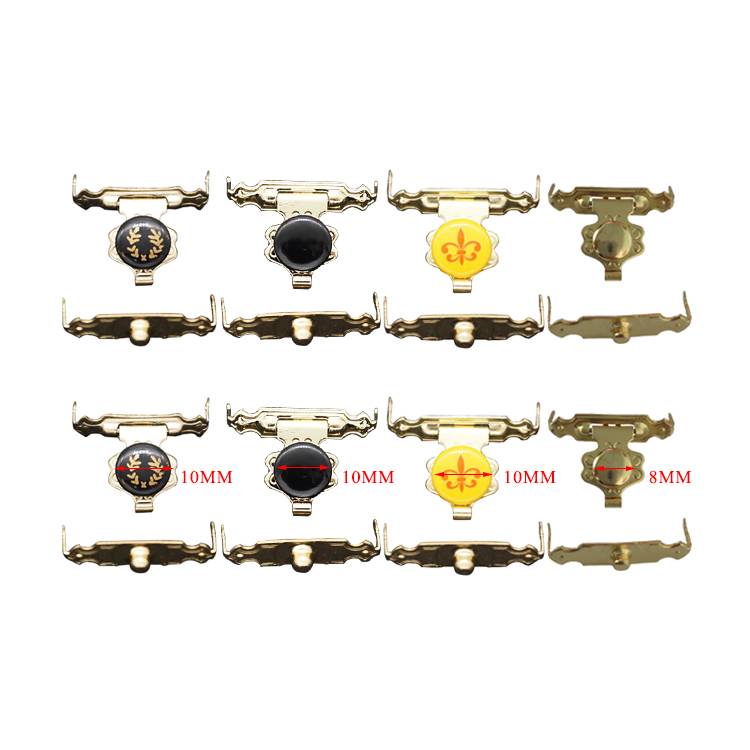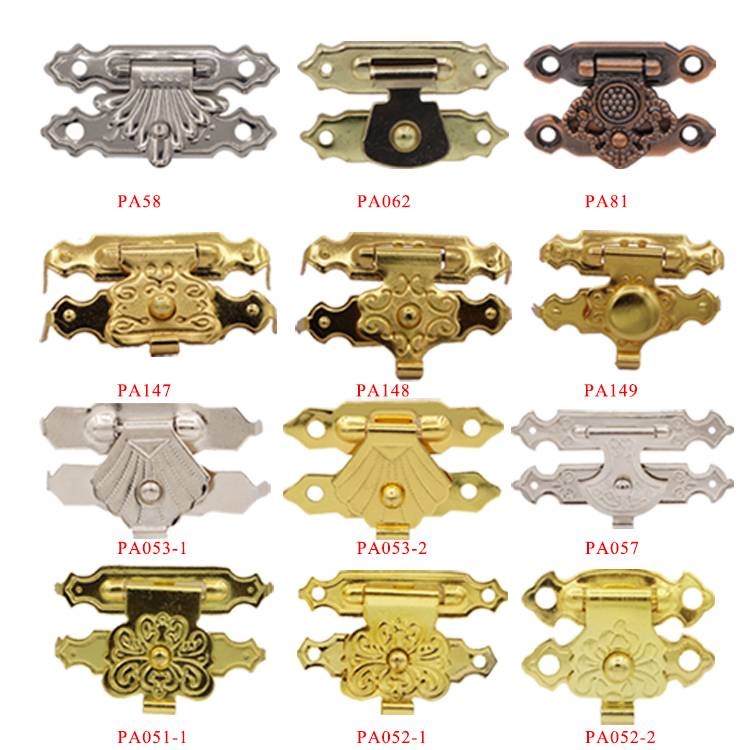





| Product Name: | Humidor box clasp lock | Product Code: | PA147 |
| Color: | Brass,welcome to customize | Place of Origin: | Guangdong,China |
| Length: | 25.6MM | Width: | 18.7MM |
| Surface Treatment: | Polished Plating | Weight: | 1.9Gram |
| Sample: | Free&Available | Material: | Iron |
To truly protect and showcase the valuables in your humidor box, choosing the right hardware is key. The humidor box clasp lock goes far beyond mere aesthetics or a basic fastening device. It balances day-to-day usability and refined style with robust security, helping to preserve optimal storage conditions inside any premium box. Whether you’re upgrading an old box, building a new one, or restoring an heirloom, selecting the best clasp lock ensures both functionality and an elegant finish.
This guide covers everything you need to know about humidor box clasp locks, from their core features and types to installation tips, troubleshooting, and the latest design trends. Armed with this knowledge, you’ll be able to choose the perfect clasp lock for your project—guaranteeing your box looks beautiful, stays secure, and retains stable conditions for years to come.
A humidor box clasp lock is a specialized hardware component designed for premium storage boxes that require both a tight seal and reliable security. Typically crafted from brass, stainless steel, or high-end alloys, a clasp lock features two main parts: the hasp (the part attached to the lid) and the catch (mounted to the lower body of the box). When closed, the clasp lock ensures a snug seal, vital for maintaining internal humidity and protecting valuable contents.
Depending on the design, a humidor box clasp lock can offer basic latching, or integrate a small key or padlock system for greater security. The visible placement on the front of the box also adds a touch of character—making it a statement of both practicality and taste.
A clasp lock prevents accidental opening and offers protection against unauthorized access, preserving the privacy of your valuables.
A tight clasp lock reinforces the box’s lid seal, essential for maintaining a controlled internal environment over time.
Well-designed clasp locks are easy to operate for daily use and manufactured for long-term reliability—opening and closing smoothly for years without sticking or loosening.
Finished in various attractive metals and styles, a clasp lock serves as an eye-catching centerpiece, complementing both vintage and contemporary box designs.
If you’re rejuvenating an old box or creating a custom piece, a quality cluster lock offers the finishing touch in both appearance and security.
A simple lever or hook system that tightly holds the lid shut, often used in traditional boxes for its reliability and ease of use.
Features a folding arm (hasp) over a staple or loop, which can be secured further with a mini padlock for extra security.
A spring-loaded fastener requiring a firm press to release the catch—convenient for one-handed use.
A lockable design where a small barrel-type lock and key set is built directly into the clasp, providing enhanced protection for valuable items.
Less common but available on specialty boxes, allowing users to set a unique numerical code for access.
Features engravings, antique finishes, or stylized shapes, ideal for gift boxes, keepsakes, and heirlooms.
Start by measuring the thickness of your box’s lid and body, as well as the available mounting surface area. Refer to manufacturers’ sizing charts to ensure compatibility.
Simple latch clasps suit daily use for private storage. For additional peace of mind, choose a lockable clasp or one with a padlock hole.
Align the finish and style of your clasp lock with existing hinges, handles, or other embellishments for a harmonious appearance.
Some clasp locks are surface-mount (requiring only screws and a screwdriver), while others must be mortised (recessed) into the box with careful measurement and extra tools.
Look for brass or stainless steel hardware, smooth action with no rough edges, and robust construction for durability.
Tools Needed: Screwdriver, drill (for pilot holes), ruler, pencil, and mounting screws (usually included).
Decide Placement:
Mark the exact location for the clasp on both the lid and the box body. Double-check for alignment.
Mark and Drill Pilot Holes:
Lightly mark screw positions and, for hardwoods, use a drill to create shallow pilot holes to prevent wood splitting.
Attach the Hasp (Lid Side):
Align the hasp with the marked position and secure it with the supplied screws.
Mount the Catch (Box Side):
Place the catch plate or staple so it aligns perfectly with the hasp; secure with screws.
Test Closure:
With the box open, close the lid and fasten the clasp to ensure a snug and reliable fit. If lockable, check key or code operation.
Pro Tips:
Smooth lines, brushed metal finishes, and discrete shapes match high-end, contemporary box designs.
Engraved brass, ornate arm details, and aged plating complete restoration projects or classic gift boxes.
Gold-plated or custom-engraved clasp locks add visible value, perfect for collectable or presentation boxes.
Standard latches with padlock holes offer reliability for frequent access and travel-ready boxes.
Purchasing coordinated hardware ensures a unified, professional look and enhances the overall quality of your finished box.
Major retailers like Amazon, eBay, and Etsy offer a wide range of types, finishes, and price points, often with real customer reviews.
For the best quality and selection, consider woodworking hardware stores or specialist suppliers focusing on box hardware.
For truly unique or branded clasp locks, engage custom hardware artisans who offer engraving and bespoke design services.




Copyright © 2021 GEXIN ALL RIGHTS RESERVED
